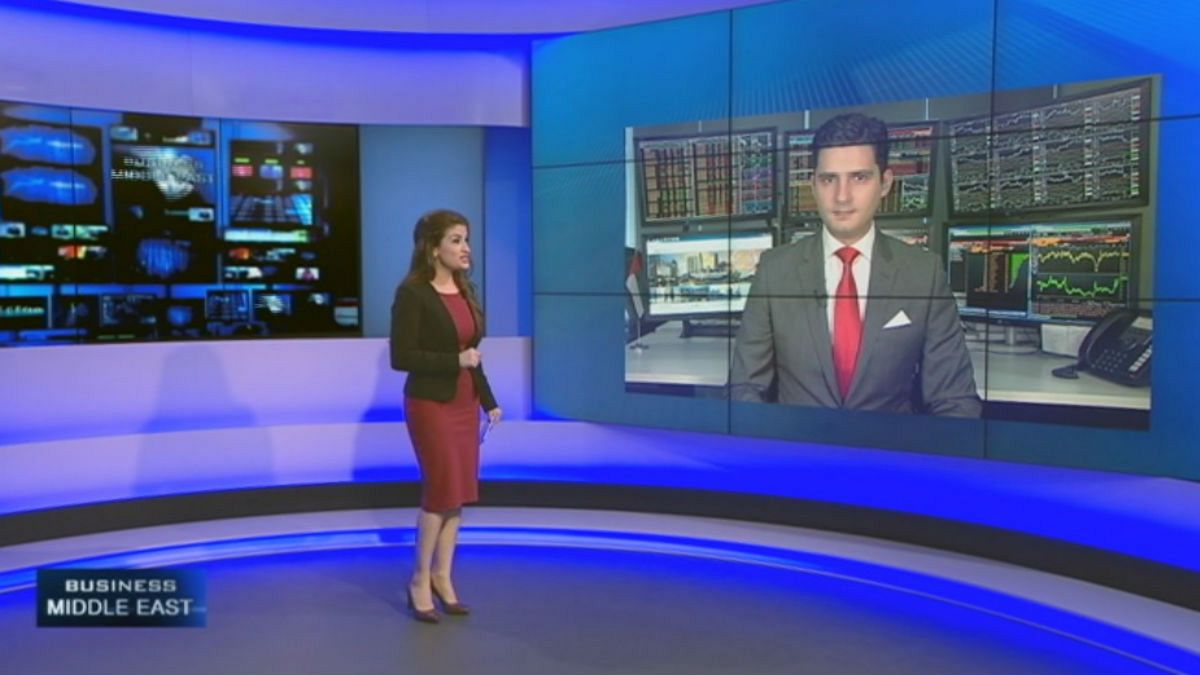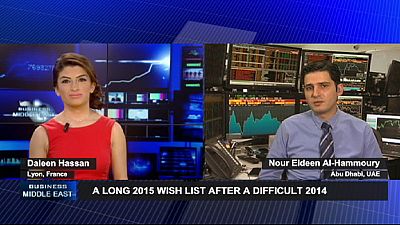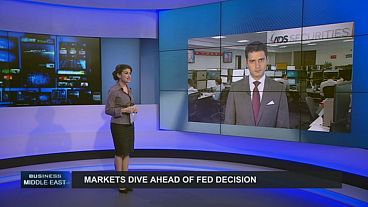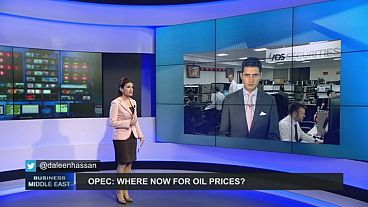On the season finale of Business Middle East we summarise a volatile year and discuss the 2016 forecast for global and MENA markets with Nour Eldeen
On the season finale of Business Middle East we summarise a volatile year and discuss the 2016 forecast for global and MENA markets with Nour Eldeen Al-Hammoury, the Chief Market Strategist at ADS Securities in Abu Dhabi.
The end of a of volatile year
The last year brought floundering currency markets, stimulus packages in Europe, Black Monday in China, an interest rate hike by the US Federal Reserve and a plummeting oil price.
Nour Al Hammoury summarised 2015 as “a year of uncertainty with many negative surprises for the global economy and the global markets.”
United States: after the Federal Reserve rate-hike
We had the historic event by the Federal Reserve of raising interest rates, however the long debate over interest rates led to volatility in emerging markets and the global equities, we saw a rise in the dollar during by about 11 percent. The US inflation remains below target.
Euronews’ Daleen Hassan asked: “After the interest rate hike, what awaits the US economy, what is the next step for the Fed?
Nour Al Hammoury said: “If the US Dollar kept on rising during 2016, we believe that the US economy might come under pressure, especially in growth and inflation again, which may lead the Federal Reserve waiting for a considerable time before taking any new measures to tighten its policy, unless things went the other way around.
“Then, the Fed might need to reconsider its December decision.
“Our estimates towards the Federal Reserve policy has been right throughout the year in terms of the right timing to raise rates. Now and after raising the fed fund rate, the Fed will be on alert and cautious toward all the developments and the economic releases, which will be the key for the Federal Reserve’s next decisions.”
Eurozone: could QE bear fruit in 2016?
In order to follow up the results of the quantitative easing (QE) programme adopted by the European Central Bank (CEB) in March.
2015 was a hard year for CEB President Mario Draghi, who tried to defend the bank policy hoping that the stimulus packages would revive the euro zone economy.
Since the beginning of the year, the euro lost about 13 percent. Some positive signs have emerged through the rate of inflation and gross domestic product, as well as improvement in the labour market.
Daleen Hassan euronews: “Could the quantitative easing programme bear fruit in the euro zone, how do you see the European economy next year?”
Nour Al Hammoury: “The ECB policy was right, the bank took the right decisions at the right time. The recovery signals started to show up clearly after more than eight months of launching the QE programme.
“Declining euro exchange rate together with the stimulus package from the ECB might be enough to grant further stabilisation and recovery in 2016.
“We believe that we will see further improvement, but the problem might be if the global economy kept on slowing down. If so, this might be another negative factor for the European markets, at least during the first quarter of 2016
“It’s worth mentioning here that the Bank of England may raise its interest rate in 2016 after the Fed hiked, which might also be a factor putting the UK and the European equities under some pressure.”
Asia: a healthy slowing down?
China’s stocks had a big shock on Black Monday, an unprecedented sale weighed on Asian markets and the global ones.
In spite of China’s stimulus measures, the economy has been slowing down, but the Chinese yuan has successfully entered the reserve-currency basket, however Japan has failed to get rid of its economic recession.
Daleen Hassan euronews: “Nour, what could 2016 carry for the Asian equities and the currencies ?
Nour Al Hammoury: “Despite all the talks about the Chinese slowing down throughout the year, which we believe is a normal and a healthy slowing down, the Chinese Yuan entered the reserve currencies basket with a notable weight of more than 11 percent.
“This is enough to show how solid the Chinese economy is.
“We believe that its strength will continue to improve in the coming year. Moreover, the Chinese market in the long term could offer good levels for buyers and investors especially after the Chinese Yuan is confirmed as a reserve currency. Over the next five years, there is more than one trillion US dollars expected to enter the Chinese market.
“In the meantime, there are many thoughts about Japan. Despite the negative figures in Q3 of this year, the numbers in Q4 have been encouraging.
“As for next year, we are favouring the Japanese Yen and we believe that the Yen will have a great potential in 2016 against a basket of currencies.”
MENA oil price: history repeats itself?
2015 recorded more geopolitical tensions, but the most significant event for the region’s markets was the sharp decline of oil prices, and no action from OPEC, the over-supply of oil flooding the market. On the other hand this year Iran signed a historic nuclear deal that ends the era of economic sanctions.
Daleen Hassan, euronews: “What is the forecast for oil price and the MENA markets next year?”
Nour Al Hammoury: “The factors causing the decline in the oil markets have already been priced in in the markets. The prices are now at very low levels, which have not been seen since 2008. However, looking back through history, it’s now at the same levels as when Crude Oil prices rallied back to 100 dollars.
“Therefore, we believe that 2016 might show us some stabilisation in oil prices with an increase in the prices. As for OPEC, its worth mentioning that an emergency meeting might be held if the prices remain under pressure, especially with Iran oil production on the way according to many of the OPEC members.
“As for the MENA equities, the current pressure may continue in 2016.
“However, these equities have always shown a quick recovery in the past year, despite the fact that the region has suffered from continuous geopolitical tensions over the past five years.
“Therefore, the stock market in this region might be near its bottom as well, and the prices are already at low levels which may attract some buyers, something we have seen in the past.”
What should investors watch in 2016?
Daleen Hassan, euronews: “Investors all over the world have a long wish-list after a tough year. Regarding trading, what should investors keep an eye on in 2016?”
Nour Al Hammoury: “For currency trading we still prefer to invest in Japanese yen over the next year.
“The traders need to pay very close attention to the economic figures, particularly from the United States. We do not know so far, what impact the interest rate-hike will have on the economy, especially bond markets.
“First and most important are ‘high-yield bonds’ which are mostly in the energy sector. We need to closely follow-up economic figures because the impact will be greater than it was previously.
“The first quarter of next year holds a lot of challenges and many things are unclear, especially the profitability of companies around the world in a slowing economy, and also the instability of oil prices.
“Therefore, it is important to take the time to make decisions in both daily and medium-term circulation of trading.”
Daleen Hassan, euronews: “I hope that 2016 brings more stability to the markets, thank you Nour for this insight and your contribution over the year.”



